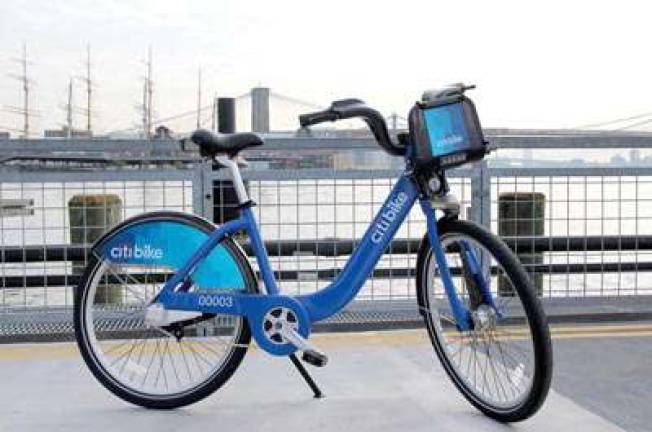The CitiBike Lowdown

Every summer, New Yorkers emerge from their apartments and offices, soaking up the great outdoors on two wheels in New York City. This summer, with the launch of CitiBike, which promises to be the largest urban bike sharing system in North America, even more New Yorkers will get to experience the joys of cycling through the city. In anticipation of the launch, Andrew Rice explains the fundamentals of CitiBike. What is a Bike Share Program? Bike sharing is essentially a self-serve bike rental. Members go to any one of the electronic docks to withdraw a bike and deposit at another dock when they're done. Cycling is not only healthy, it's often quicker than public transportation-and a lot more fun! Now, commuters can enjoy the benefits of riding a bike without having to worry about storage or maintenance. How many bikes are there? There will be 10,000 bicycles around the city, with over 600 docking stations to facilitate rental and return. How do I become a member? People interested in renting a bike through the program use the automated kiosks at every dock to purchase a daily or weekly pass with a credit card; they're then given an access code. Those who'd like an annual membership sign up online and receive a special key in the mail that allows them to unlock the bikes. How much does it cost? The base prices for membership are $9.95 for 24 hours, $25 for a week and $95 for an annual membership. However, the cost also includes ride charges of up to $4 for 60 minutes, $13 for 90 minutes, $25 for 120 minutes and $13 for each additional 30 minutes over two hours. How does it work? Riders get the first 30 minutes of their ride free, while annual members get 45 minutes. Most bike trips in the city are under two miles and take less than half an hour. People who wish to take longer rides simply have to dock their bike and then rent out another one straight away. What happens if I go over the limit? People who hold onto their bikes too long get charged an incremental fee the longer the bikes are out of the system. This is designed to prevent theft of the bicycles more than anything. If you're nearing the end of your time and the closest dock is full, there is an option to gain an additional courtesy time to find another dock. How will I know if there are bikes or empty docks nearby? Each kiosk will have its own map. In addition, CitiBike will also releases a smart phone app called SpotCycle, which will provide real-time bike and dock availability. What's to stop someone from stealing a bike? Users are supposed to leave their bikes at the docking stations when they're finished. If they try to bring the bikes home, they'll soon face a rather large credit card bill. The bike parts have no resale value, and each bike is equipped with a GPS.